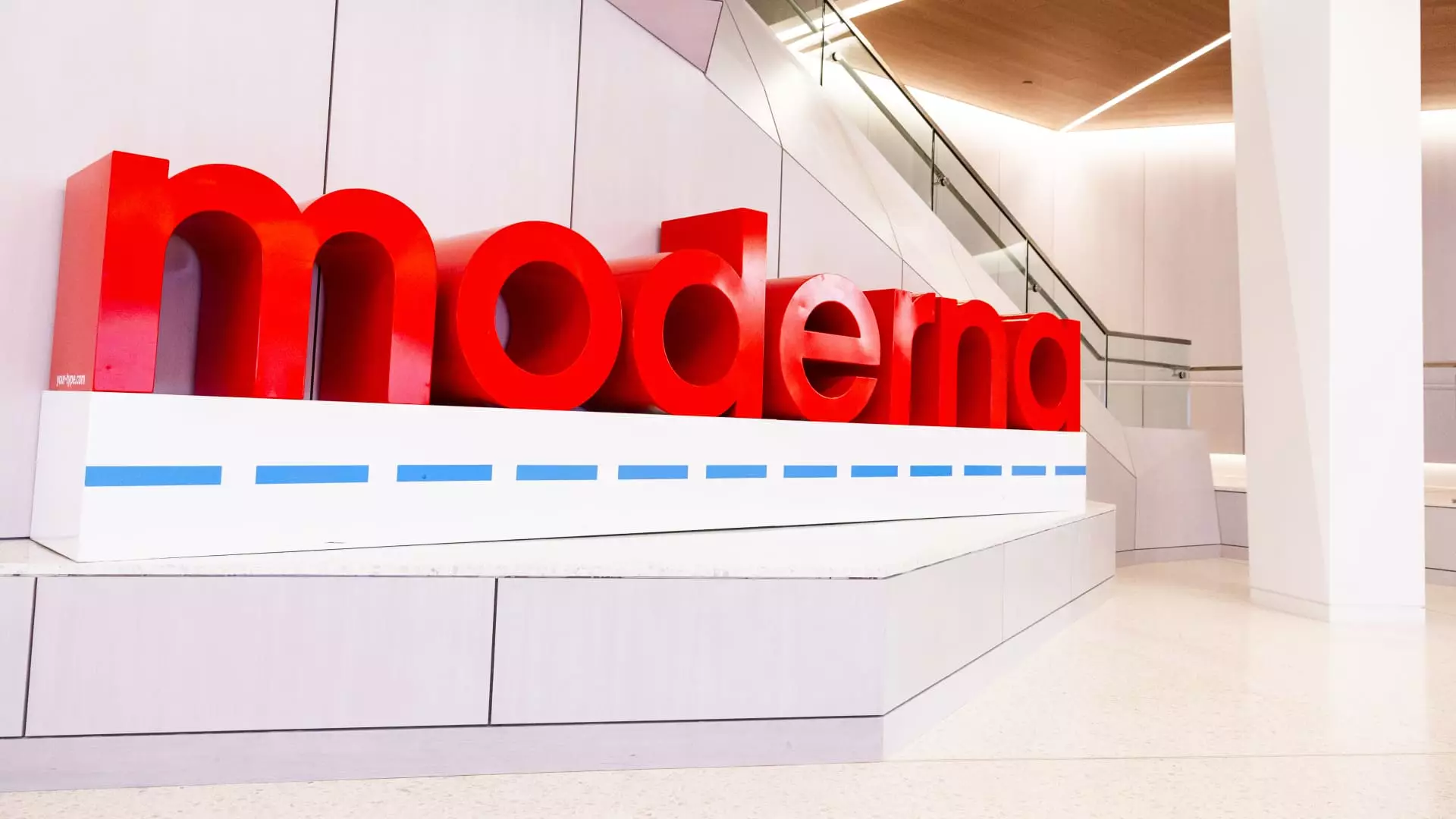In the aftermath of the global pandemic, biotech companies that once thrived are facing a daunting array of challenges, and Moderna is no exception. In a recent report detailing its fourth quarter of 2024, the company revealed that it experienced a significant drop in profits, culminating in a net loss of $1.12 billion or $2.91 per share. This stark contrast to the year-ago period, where Moderna reported a net income of $217 million, underscores the profound shifts in the biotech landscape following the peak of Covid-19 vaccinations.
While revenues for the fourth quarter exceeded Wall Street expectations at $966 million—albeit less than half of the $2.8 billion from the previous year—the financials paint a picture of an organization straining under the weight of its own past success. As the demand for the Covid vaccine continues to dwindle, it becomes increasingly clear that Moderna must pivot to new products to ensure its future viability.
The immediate response from markets to Moderna’s financial disclosures was telling, with shares dropping over 4% in premarket trading. Such reactions are not merely reflective of quarterly results but are part of a broader narrative of uncertainty surrounding Moderna’s strategic plans. Earlier in the year, the company slashed its 2025 sales guidance by approximately $1 billion, contributing to a 20% decline in share price year-to-date.
CFO Jamey Mock indicated that the company aims to reduce costs significantly—forecasting a $1 billion reduction by the end of 2025. Despite the cost-cutting measures, uncertainties related to competition in the Covid vaccine space, decreasing vaccination rates, and questions surrounding future vaccine recommendations continue to loom large. This tumultuous landscape complicates Moderna’s positioning as it attempts to regain momentum.
The composition of Moderna’s sales during this recent quarter reveals critical insights into both the company’s challenges and potential opportunities. A staggering $923 million of the reported revenue came from the Covid vaccine—a decline of 66% year-over-year. The company collected $244 million in sales from the United States and $679 million from international markets, highlighting the shifting focus and competition in the vaccine landscape.
Importantly, a mere $15 million came from sales of Moderna’s recently launched RSV vaccine—its second approved product after the Covid vaccine. While analysts had projected slightly higher sales, the approval and rollout of the RSV product signify Moderna’s ongoing efforts to diversify its portfolio. The infusion of new products, primarily revolving around the messenger RNA platform that has underpinned its vaccine success, could prove crucial for the future.
Expanding the Product Pipeline: A Ray of Hope
In a strategic move to bolster its product lineup, Moderna is banking on a robust pipeline of mRNA-based products slated for approval within the next three years. The company recently submitted three new mRNA products for regulatory approval, including a next-generation Covid vaccine and combination shots targeting both Covid and flu, which represent significant steps toward technological advancement in vaccine development.
With anticipated decisions from the FDA regarding the next-generation Covid shot in May and broader approval for the RSV vaccine in June, there exists a potential path for recovery, albeit intertwined with considerable risk. The timeline ahead is critical, as Moderna endeavors to counteract the loss from its previous flagship product while introducing innovative options to meet shifting public health needs.
Moderna’s recent financial report indicates a noteworthy commitment to cost management, with a reported 20% decrease in research and development expenses. This reduction stems primarily from reduced costs related to its Covid, RSV, and flu product initiatives, positioning the company to manage its resources carefully in uncertain times. The decrease in selling, general, and administrative expenses by 25% further reflects an effort to optimize operational efficiencies.
However, it remains vital for Moderna to align its cost controls with a clear and aggressive strategy for product development and market penetration. The interplay between reducing expenses and investing in R&D capabilities will be instrumental for sustained growth as the biotech industry continues to evolve post-pandemic.
As Moderna grapples with a substantial net loss and declining vaccine demand, its journey into new product spaces, aggressive cost-cutting, and a crystal-clear focus on R&D positions the company at a pivotal crossroad. While the challenges are formidable, initiatives aimed at enhancing its mRNA pipeline and securing new revenue streams could steer the company toward recovery. Investors and stakeholders alike will be awaiting tangible results from Moderna’s strategic shifts, as the future remains uncertain but potentially rewarding for those willing to navigate the industry’s new normal.

